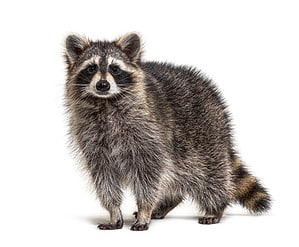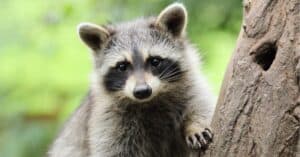Raccoons are capable of making all sorts of noises. These masked bandits can squeal, churr, bark, and the list goes on! Some of their sounds are tonal, like their famous nightly whistle. While other sounds are more rhythmic, like their pulsating purr. In this article, we’ll be exploring the expressive sounds raccoons make, and what each one means. So take a look! By the time you’re done reading, you’ll be able to speak raccoon.
1. Whistle
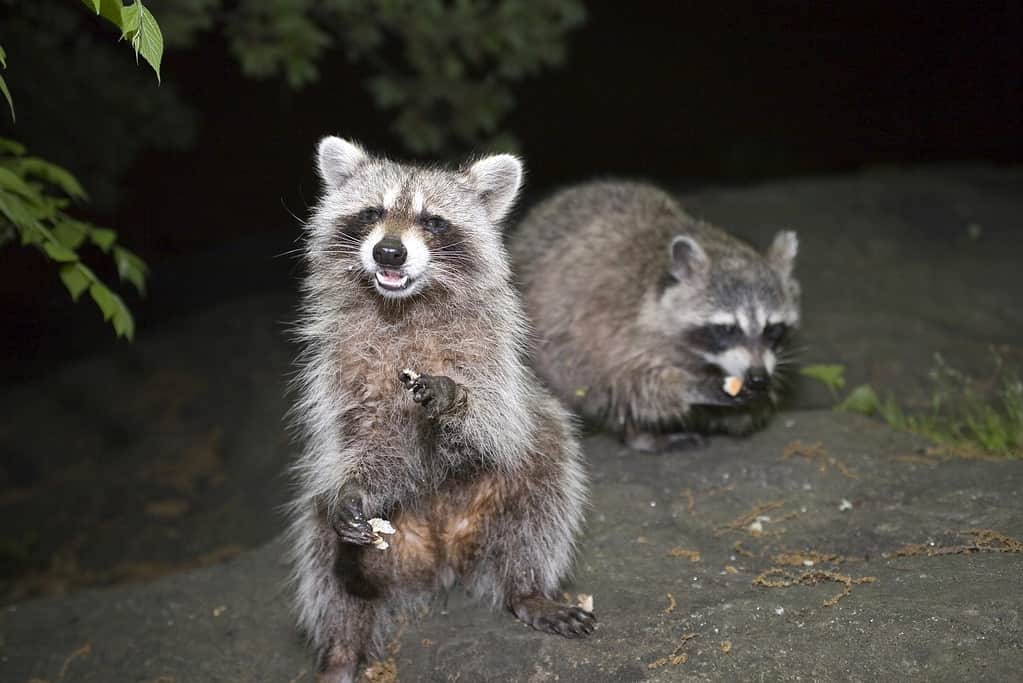
A raccoon can whistle at birth, and they’ll continue to whistle throughout their life.
©iStock.com/eddtoro
Have you ever heard a raccoon whistle? The tonal vocalization has a high-pitched musical quality. Young and adult raccoons whistle a lot, especially in their first two months.
Otto J. Sieber explains the sounds raccoons make in their article “Vocal Communication in Raccoons (Procyon lotor)”. Here they explain how whistling helps raccoons talk to each other from far away. The high-pitched sound can carry over 300 feet!
A high-pitched whistle can serve as an alarm, warning others about a nearby coyote or fox. Whistling is also a way for mother raccoons to find their babies. And it’s common for raccoons to make more than one noise when they whistle.
A whistling raccoon might also be happy, scared, or somewhere in between. Sometimes raccoons whistle in delight when they find food such as fruits, fish, frogs, bird eggs, dead animals, and the list goes on.
2. Squeal
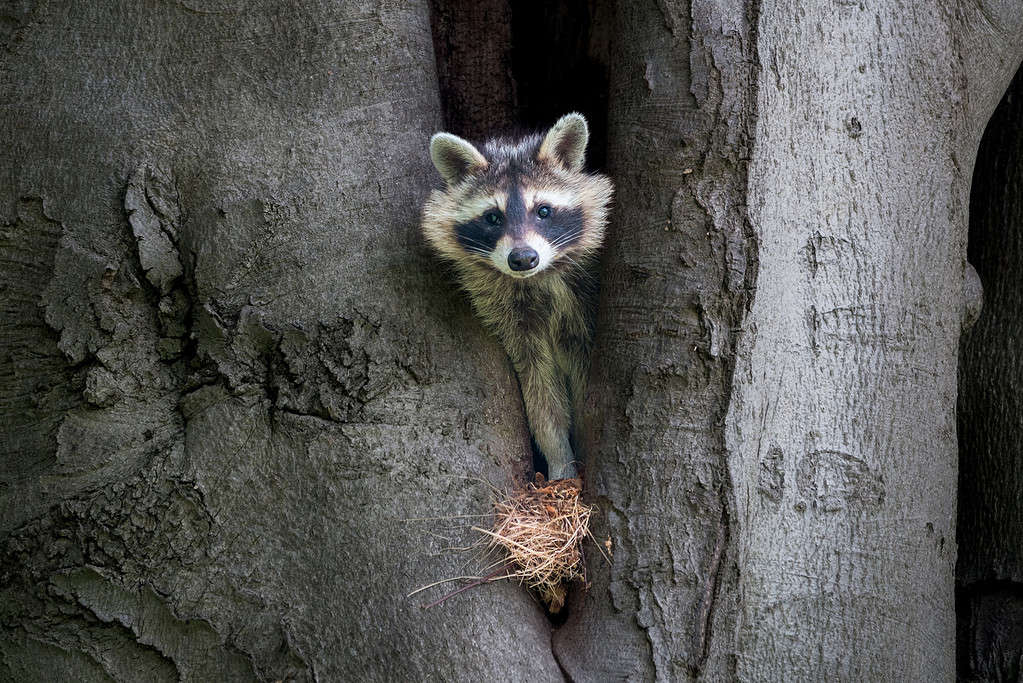
If a raccoon is in pain or feels there’s a threat, they might let out a loud squealing sound.
©Brams-Photography/iStock via Getty Images
Raccoons make a loud squeal and cry to express fear, pain, and danger. The high-pitched sound can be heard up to half a football field away and can attract other raccoons. Squeals are common from young raccoons in their den. The loud noise is also a warning signal, letting others know of a nearby threat.
The squeal can be on the mild side, or loud and sassy. It may also include a bit of churrs. And sometimes, raccoons combine the squeal with other sounds like a whimper. This is common when they’re trying to communicate with other animals, like us humans.
3. Screech
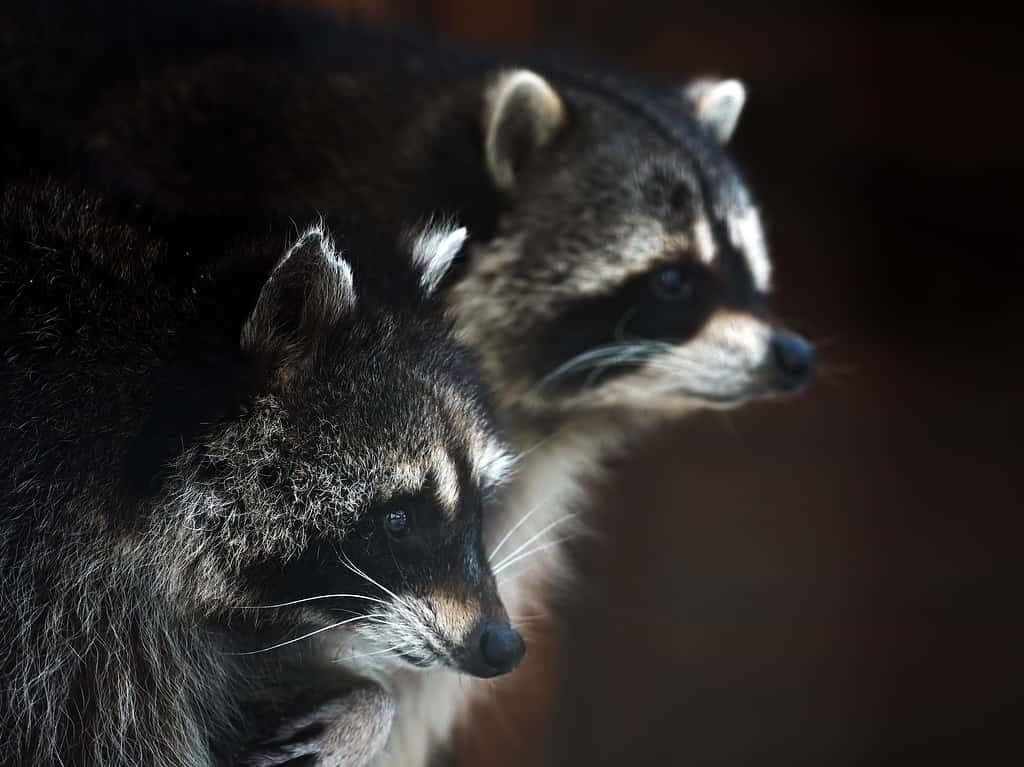
It’s common for raccoons to screech during mating season.
©iStock.com/SergeiM
Whether they’re fighting or announcing they’re ready to mate, raccoons love to screech. This loud sound can be heard up to 100 meters away. A single screech can help dominate or defend territory by scaring away rivals and predators.
Like many of the raccoon’s intricate sounds, the screech can vary in pitch and duration depending on the situation. There’s a difference between a mating screech and a fighting screech.
4. Bark
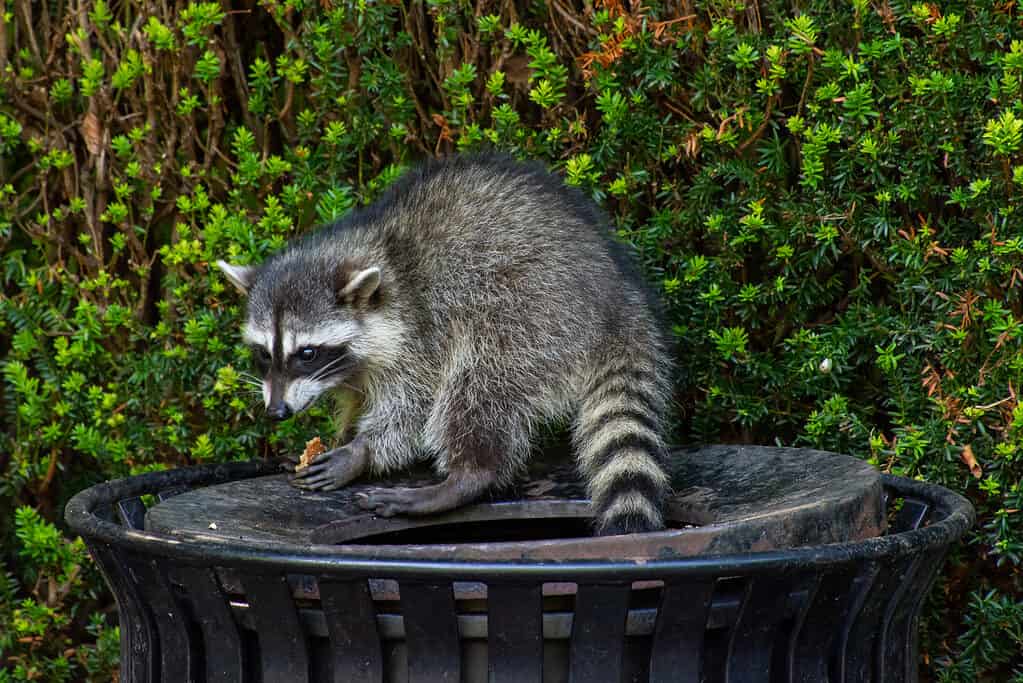
Sometimes raccoons bark in excitement over the discovery of food.
©kingma photos/Shutterstock.com
Did you know raccoons can bark? A bark is a sound raccoons make when they’re all worked up. The vocalization, sometimes called a gecker, can mean different things depending on the situation.
Female raccoons sometimes bark during breeding. And any adult raccoon might also bark in frustration or agitation. Adults also bark in excitement when they find food. The Clinic for the Rehabilitation of Wildlife offers webcams where you can watch their raccoon residents enjoy live prey training.
5. Grunts and Growls
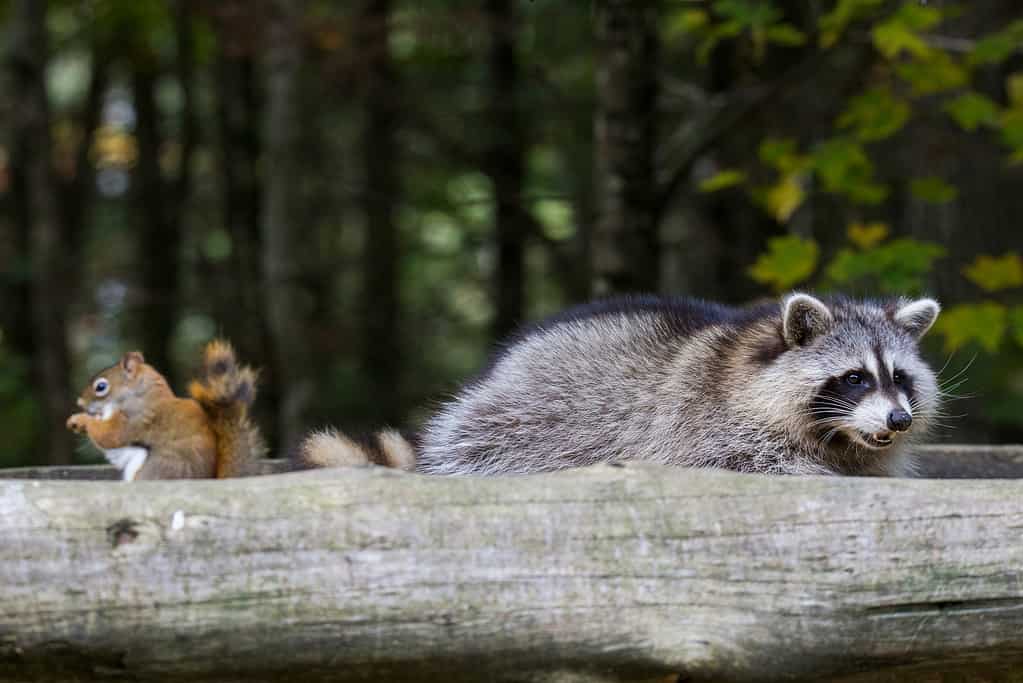
A raccoon’s grunt sounds similar to a pig’s oink.
©Mircea Costina/Shutterstock.com
Adult raccoons can grunt. Sometimes a short grunt noise sounds similar to an oinking pig. Like the other noises, this sound carries with it a few different meanings. A grunting noise can be a casual way of saying hello, or showing submission. It can also be a sign of fear or aggression.
6. Chitter
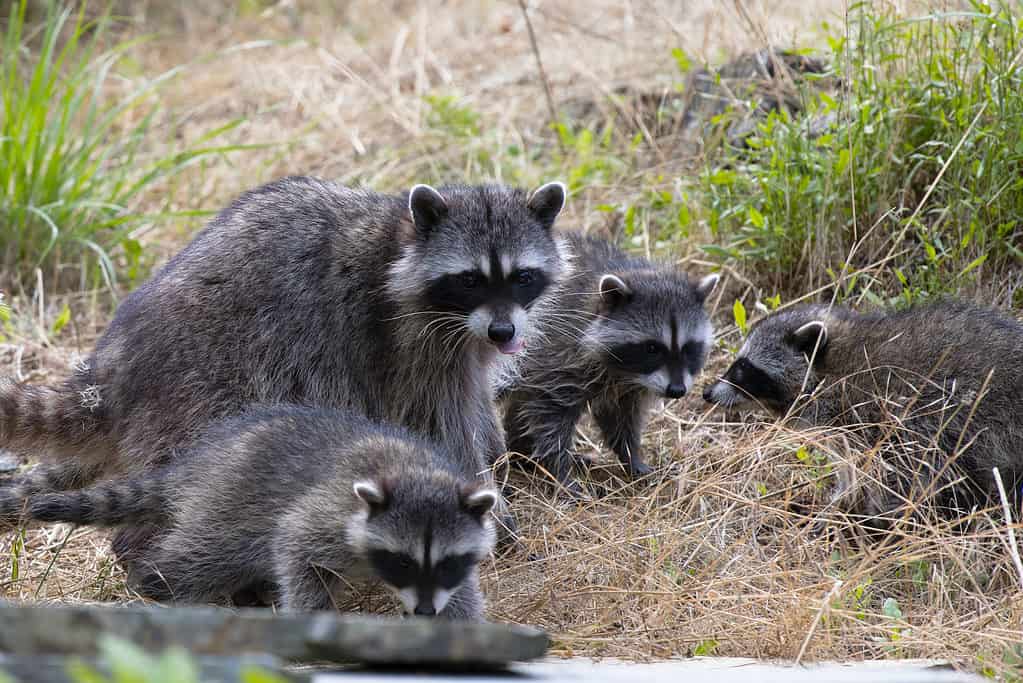
Mother raccoons will chitter to calm their young, a sound the young will remember far into adulthood.
©iStock.com/Wirestock
Chittering sounds are short, high-pitched noises made by raccoons when they feel playful or curious. These chirps can serve as a way to greet one another, it’s also a way to announce the presence of food or water.
Chittering is also a sound mothers use to comfort their young. As they mature, adults remember the noise and will recreate it to self-soothe during stressful times. Chitters sounds like the soothing purr raccoons can produce. Young raccoons love chittering the most, but older adults do it too.
7. Churr
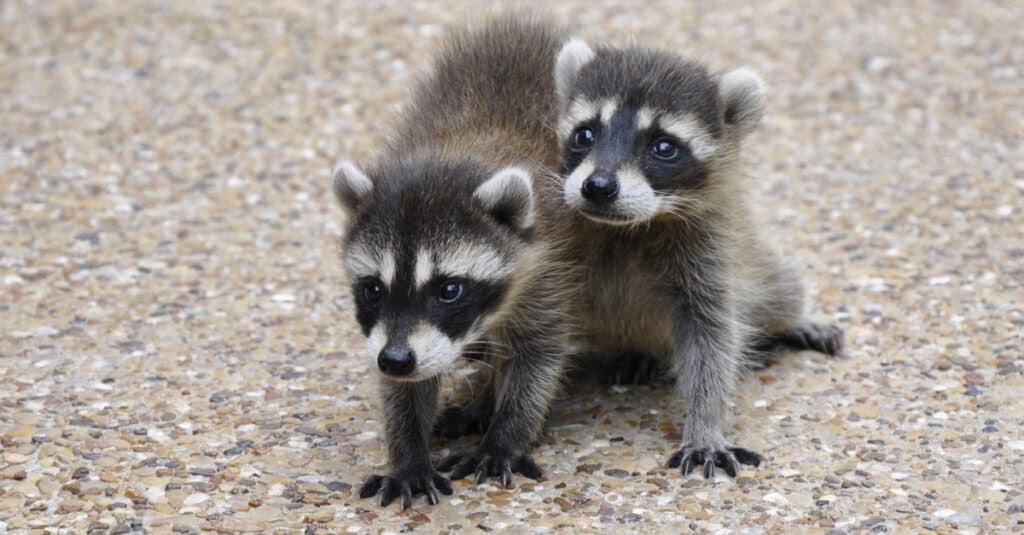
Mother raccoons will make a whirling churr-churr sound to comfort their young.
©Becky Sheridan/Shutterstock.com
Raccoons produce a rhythmic churr-churr noise. This sound happens most between a mother raccoon and her offspring while they’re feeding. Mothers use a churr-churr sound, chittering, twittering, or purring sounds to quiet down their young ones. In response to the soothing sounds, the kits express contentment with a gentle churr and sometimes a purr.
8. Mews
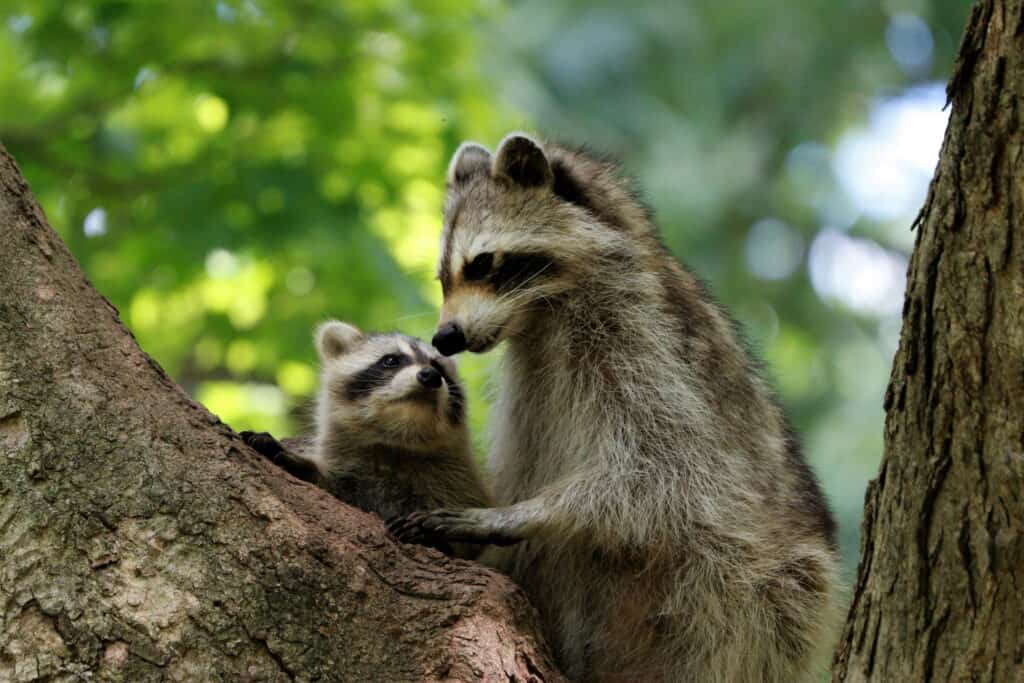
Young raccoons can make many of the same sounds as adults.
©L-N/Shutterstock.com
The Greenwood Wildlife Rehabilitation Center offers this recording of a baby raccoon. If you listen to the sound clip you’ll notice that even baby raccoons can make a lot of the same sounds as an adult. While in the nest kits do a lot of mewing, crying, chippering, churring, and squealing. These communicative little babies can even whistle.
Whistling is a fun sound that raccoons keep into adulthood. They whistle a lot in their first two months, and though they might whistle as grown-ups, it’s not as often as when they were little.
9. Whiny Cry

High-pitched cries can be a
sign of a nearby raccoon den
, with newborn kits.
©Georgi Baird/Shutterstock.com
Baby raccoons also make a distinct crying sound. They usually reserve this sound to call out when their mother’s away, which is often. Mom raccoons have the constant responsibility of scavenging food for their young. Adult raccoons can also cry as a way of expressing stress, fear, or pain.
10. Growl
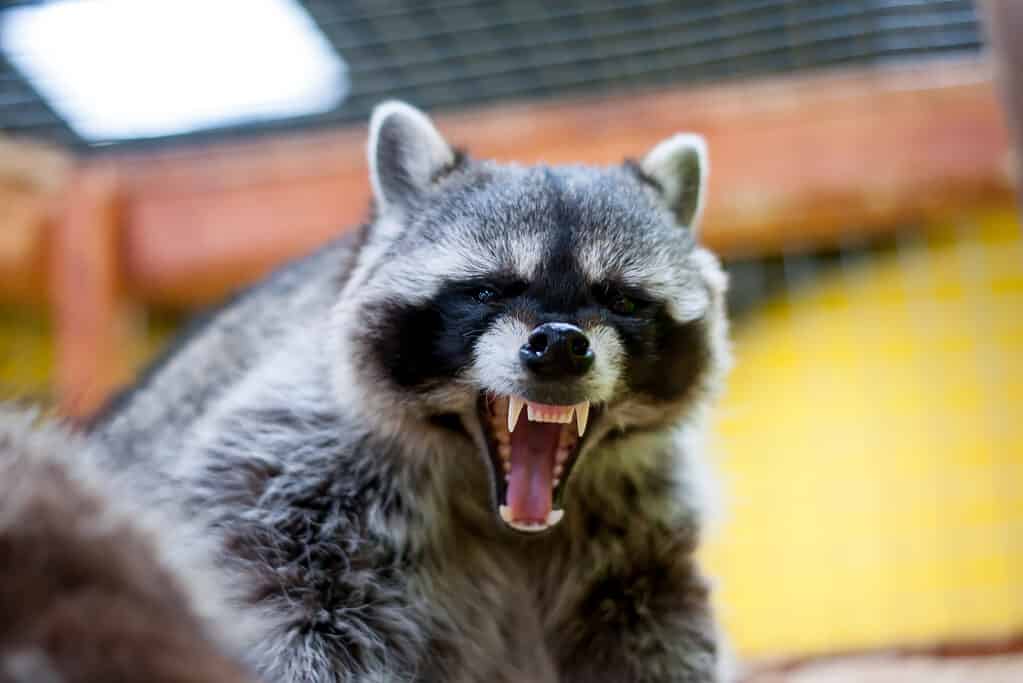
Raccoons are capable of producing an intimidating snarly growl.
©Vital9s/Shutterstock.com
Raccoons growl when they’re facing a threat. The sound is similar to the noise dogs make when they fight. It’s an intimidating, bassy vocalization, with a lot of snarl. Along with growling, they’ll likely throw in a few grunts and hisses too.
The photo featured at the top of this post is © Eric Isselee/Shutterstock.com
Thank you for reading! Have some feedback for us? Contact the AZ Animals editorial team.



